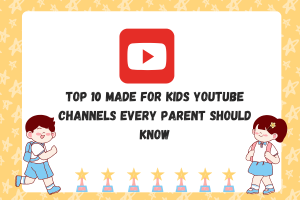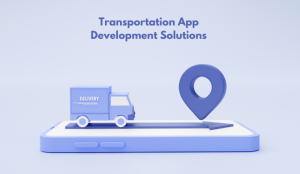Developing an eLearning App That Users Love: 10 Essential Features

The eLearning industry has experienced significant growth, with a spotlight on it during the COVID-19 pandemic. In the last 5 years, searches for “eLearning” have surged by 271%, as reported by Exploding Topics.
This industry leverages various technologies, including smartphones, the internet, Artificial Intelligence (AI), Internet of Things (IoT), and Virtual Reality (VR)/Augmented Reality (AR), to expand its global reach and make education more accessible.
Creating a successful eLearning app i involves careful consideration of crucial features. In this article, we will explore 10 essential features to ensure your app stands out in the thriving industry:
10 Must-Have Features Of A Succesful Elearning App
Here are the key features you can include in your eLearning app development process:
- User-friendly interface:
A user-friendly interface is designed with the user’s experience at the forefront. It prioritizes clear navigation, logical content organization, and an attractive design.
Maintaining consistency in layout and color schemes further improves the overall user-friendliness of the platform, making it easier for users to understand, access, and engage with the content. In essence, it’s about creating a design that ensures a positive and intuitive interaction for users, ultimately improving their overall experience
- Offline access:
Offline access is a crucial feature for online learning platforms, especially in regions with limited internet connectivity. To make it user-friendly, offer a straightforward download process, automatic progress synchronization upon reconnection, and the option for users to schedule content downloads during times of better connectivity. This seamless approach enhances the accessibility and flexibility of learning, ensuring a consistent experience for all users.
- Gamification:
Gamification serves as an effective tool to inject an element of enjoyment and motivation into the learning process. By incorporating features such as rewards, badges, and leaderboards, learners are encouraged to engage actively and stay motivated to complete their courses.
These rewards can take various forms, from virtual certificates to discounts on future courses or even physical merchandise, instilling a sense of achievement and inspiring learners to continue their educational journey.. Moreover, leaderboards and healthy competition among peers foster a sense of community and camaraderie, as learners challenge one another to excel and collaborate in their educational pursuits.
- Security and privacy:
Security and privacy are critical in any e-learning application. Beyond secure login procedures and encryption, it’s essential to implement comprehensive data protection measures. This includes stringent data deletion policies to ensure that user data is properly removed when it’s no longer needed, aligning with data retention regulations.
Additionally, user consent and transparency in data handling are crucial, allowing learners to understand and control their data. Regular security audits and updates should be conducted to guard against emerging threats and vulnerabilities, ensuring a safe and trustworthy e-learning environment for all users.
- Multilingual Support:
To make your e-learning app accessible to a global audience, offer multilingual support. This means allowing users to choose their preferred language for content. This not only involves translating the content but also making sure the app’s interface is user-friendly in multiple languages.
Multilingual support improves inclusivity, ensures learners can understand the learning material better in their own language, and makes the learning experience more engaging and effective for people from diverse backgrounds.
- Mobile Accessibility:
Mobile accessibility is critical in e-learning, catering to the on-the-go nature of modern learners. It involves improving the e-learning app for mobile devices, ensuring that the user interface is responsive and easy to use on smartphones and tablets. For mobile-responsive websites, providing dedicated mobile apps for both iOS and Android platforms can improve accessibility. These apps should offer a seamless learning experience, allowing users to access course materials, participate in discussions, and track their progress conveniently. By embracing mobile accessibility, e-learning becomes more flexible, fitting into learners’ busy schedules and enabling them to study wherever and whenever it’s most convenient.
- Interactive Content:
Interactive content is a powerful tool in e-learning that goes beyond traditional teaching methods. Learners are actively engaged in the learning process by incorporating quizzes, assignments, discussion forums, and collaborative projects.
These interactive elements stimulate critical thinking, problem-solving, and knowledge retention. Moreover, they encourage active participation and peer-to-peer learning, promoting a sense of community and knowledge exchange among learners.
- Content Management System (CMS):
A strong Content Management System (CMS) streamlines content management for instructors, enabling them to efficiently handle various content types, including text, images, videos, and interactive elements.
The CMS should also incorporate features like version control and collaboration tools, fostering efficient teamwork among content creators. In turn, this user-friendly CMS empowers instructors and contributes to an enhanced learning experience for students by making content management and delivery seamless and effective.
- Payment Integration :
Payment integration in an e-learning app is crucial for offering a seamless and accessible payment experience to users. It should support multiple payment gateways to accommodate various preferences and ensure the security of financial transactions.
Additionally, transparent pricing, clear refund policies, and secure storage of payment information are essential for building user trust. The integration should also enable flexible payment options, such as one-time purchases, subscriptions, or installment plans, making it easier for learners to access and pay for courses.
A reliable payment system not only benefits the app’s financial sustainability but also enhances the overall user experience, promoting user satisfaction and trust in the platform.
- Integration with Learning Management Systems (LMS):
Integrating your e-learning app with popular Learning Management Systems (LMS) is a smart move for schools and businesses. It means that data like courses, progress, and achievements can flow smoothly between your app and the LMS, making things easier for everyone.
Learners and admins can work with content, track performance, and run training programs on both platforms, which is super convenient.
Plus, it offers single sign-on (SSO), making it simple for users to get in. This kind of teamwork between your app and LMS creates a smooth learning environment. It’s a win-win for schools and companies because they can use your app with their existing systems, which makes users happy and adoption rates go up.
Conclusion
By incorporating these essential features, you can create an eLearning app that is engaging, effective, and stands out in the competitive market. Remember, the key to successful eLearning app development service lies in understanding your target audience, providing high-quality content, and delivering a personalized learning experience that caters to their needs and preferences.
Author Bio
Pranjal Mehta
Experienced Managing Director with a demonstrated history of working in the information technology and services industry. Skilled in Oracle Database, Customer Relationship Management (CRM), Databases, IT Service Management, and Management. Strong business development professional with a Master of Information Technology focused in Information Technology from Swinburne University of Technology.






